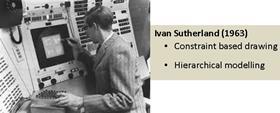BIM is set to be the biggest change this industry has seen for over 160 years

The construction sector has had little in the way of truly disruptive innovations that have reshaped our marketplace. Arguably, since 1853, when owing to the creation of his safety (lift) brake, Elisha Otis brought to life the capacity for high rise buildings that would change the topography of our cities, there have been few ground-breaking constructs that we can consider as a paradigm shifting.
So is it realistic to hypothesise that Building Information Modelling (BIM) is the 21st century game changer for our industry?Well firstly it is worth considering BIM has been with us in some guise, such as the 3D computer based graphical interface introduced by Ivan Sutherland, for over half a century.

During the intervening period we have come a considerable way in our dynamic modelling journey, especially in recent years with the development of standards for managing and exchanging data in a common environment and, positively, we don’t need an entire building to house an 8 bit machine or a PhD in computer science to switch them on. Generation “Y” will however unquestionably look back at our current modelling efforts and relate them to no more than simple cave drawings. It will be hard for them to believe that back in 2014 the construction industry “nostalgically” used analogue as a means of transaction.
Yes BIM has been a slow burner, however in my opinion it will enable a designed disruptive change in our sector
And that is really the game changer: digital transactions and queries in our built environment. Level 2 BIM maturity is helping to build a solid foundation for our construction economy to switch from analogue to digital, through validated, computer-readable data sets. The British Standards Institute (BSI) has just opened public consultation on BS1192-4: “Collaborative production of information Part 4: COBie: Code of practice”. This information exchange standard, to facilitate digital transactions, is a key milestone in our shift towards digital.
While for many the thought of producing structured data seems like a challenge, early adopters are already thinking about a future shift towards sematic searching to make sense out of the ever growing amounts of data both structured and unstructured.
Looking towards the near future and Level 3 BIM, its performance data sets, automation of the checking process, real-time data transactions and self-procurement will all become potential components of a “big BIM” agenda that really will change our sector and unlock the potential for adaptive intelligent assets. It is axiomatic to assume that within a decade the construction will have globally transitioned, through the availability of big data to an industry where most tasks will be “computerisable” and with borderless electronic procurement.
Yes BIM has been a slow burner, however in my opinion it will enable a designed disruptive change in our sector similar to the potential unlocked by Mr Otis. So what skills and knowledge will be required for life in the big BIM environment?
While construction is probably the last sector to make the digital switch over, it is observable that this whole industry change will happen; what can be automated ultimately will be automated
Hopefully the next generation of industry entrants will have been inspired through programmes such as STEMNET (the Science, Technology, Engineering and Mathematics Network) which creates opportunities to enthuse young people in STEM careers. While my scholastic memories of STEM are anchored in the 1980s with paper based design (tech drawing) and creation of a wooden six jar spice rack - complete with several bent shank nails. Today’s students are being motivated, consuming predictive technologies, using maths to create useful algorithms and analytical skills all ideal for a career in the future construction sector.
While construction is probably the last sector to make the digital switch over, it is observable that this whole industry change will happen; what can be automated ultimately will be automated. The naysayers will eventually be replaced by the next generation of digital natives who will, with the right education, ensure that the UK remains at the vanguard of a digitally enabled built environment. My gut tells me I am right and these BIM dots will all start to join up!
As the late Steve Jobs said “you have to trust that the dots will somehow connect in your future. You have to trust in something - your gut, destiny, life, karma, whatever. This approach has never let me down, and it has made all the difference in my life.” Trust me, “big BIM” will be the next paradigm shift.
Professor David Philp is head of BIM at Mace and part of the government BIM Task Group’s core team



























No comments yet